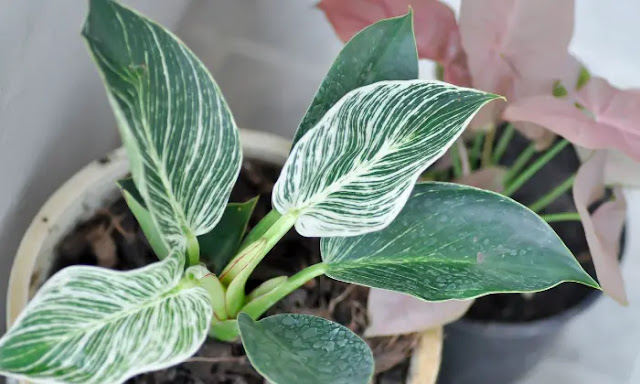Syngonium White Butterfly: The perfect low-light houseplant
The Syngonium White Butterfly is a popular houseplant known for its beautiful, delicate leaves. It is a member of the Araceae family, including the well-known Philodendron and Pothos plants. This plant is native to tropical regions of Central and South America and is often used as an indoor plant in homes and offices.
Syngonium White Butterfly Appearance
The Syngonium White Butterfly is a climbing or trailing plant that can grow several feet long. Its leaves are glossy and heart-shaped and typically pale green with white and cream-colored variegations. As the plant matures, its leaves become larger and more deeply lobed. The leaves of this plant can grow to be up to 4 inches long and 3 inches wide. The plant also produces small, inconspicuous flowers, followed by small berries.
Size Of Syngonium White Butterfly
The size of a Syngonium White Butterfly can vary depending on how it's grown and cared for. In general, they are considered to be small to medium-sized houseplants. When grown in a container, the leaves can reach up to 6-8 inches long and 4-6 inches wide, but when grown as a climber, they can reach up to 3 ft.
It is essential to remember that the size of a Syngonium White Butterfly can be controlled through regular pruning and pinching back. This will help to promote bushier growth and keep the plant compact. Also, pot size affects how big they can grow; a small pot will have a smaller size than a larger pot.
Syngonium White Butterfly Care
Light:
The Syngonium White Butterfly prefers bright, indirect light but can tolerate low light conditions. Avoid direct sunlight, which can cause the leaves to turn yellow.
Water:
Keep the soil consistently moist but not soggy.
Allow the top inch of soil to dry out slightly before watering.
Be careful not to over-water, as this can lead to root rot.
Humidity:
These plants prefer high humidity, so you can mist the leaves regularly or place the plant on a tray of wet pebbles.
Temperature:
Syngonium White Butterfly prefers temperatures between 60 and 75 degrees Fahrenheit. Avoid placing the plant in drafty or scorching areas.
Fertilizer:
Feed the plant monthly with a balanced, water-soluble fertilizer during the growing season.
Pruning:
Regularly prune back the tips of the plant to encourage bushiness and control its size.
Propagation:
The Syngonium White Butterfly can be propagated easily by rooting stem cuttings in water or soil.
Common Issues:
Yellow leaves indicate that the plant is getting too much direct sunlight. Move the plant to a location with more indirect light.
Brown, crispy leaf edges:
This can be caused by dry air or low humidity. Increase humidity around the plant by misting the leaves or using a humidifier.
Leaves turning brown:
This can be caused by over-watering or poor drainage. Allow the soil to dry before watering, and ensure the pot has drainage holes.
Conclusion:
The Syngonium White Butterfly is a beautiful and delicate houseplant that is an excellent addition to any indoor garden. Its delicate leaves add a touch of elegance to any room, and it is easy to care for, making it a perfect choice for beginners. As a member of the Araceae family, it is related to other popular houseplants such as Philodendrons and Pothos.
Frequently Asked Questions:
Q: What type of light does a Syngonium White Butterfly need?
A: The Syngonium White Butterfly prefers bright, indirect light but can tolerate low light conditions. Avoid placing it in direct sunlight, which can cause the leaves to scorch.
Q: How do I water a Syngonium White Butterfly?
A: Water your Syngonium White Butterfly when the top inch of soil is dry. Be careful not to overwater, as this can lead to root rot. Use well-draining soil and a pot with drainage holes to prevent water from sitting in the bottom of the pot.
Q: How often do I need to fertilize my Syngonium White Butterfly?
A: During the growing season (spring and summer), you can fertilize your Syngonium White Butterfly every 4-6 weeks using a balanced, water-soluble fertilizer. During the dormant season (fall and winter), you can reduce fertilizing to once a month or every 6-8 weeks.
Q: How do I propagate my Syngonium White Butterfly?
A: The Syngonium White Butterfly can be propagated through stem cuttings. Take a cutting with at least two leaves and a node, and insert it into a pot with well-draining soil. Keep the cutting in a warm, humid place, and keep the soil moist but not soggy.
Q: Are Syngonium White Butterflies toxic to pets or humans?
A: Syngonium White Butterfly is toxic to pets and humans if ingested. It contains calcium oxalate crystals, a chemical compound that can irritate the mouth and throat and cause difficulty swallowing. If ingested, it’s recommended to seek immediate medical attention.





Comments
Post a Comment